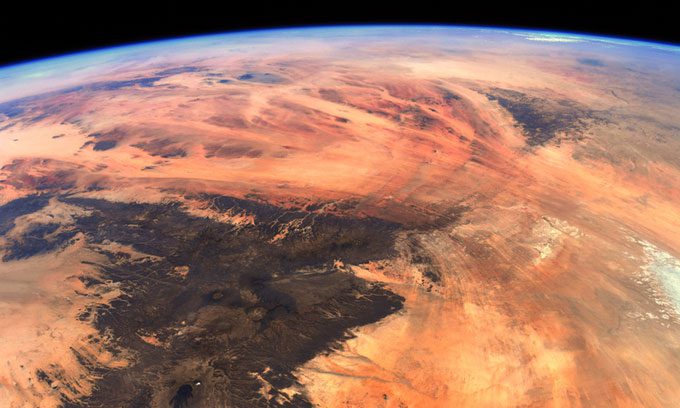Astronauts working on the International Space Station (ISS) captured a vast, cloudless expanse of red land, resembling the landscape of the red planet.

The scene resembling Mars when observing Earth from the ISS. (Photo: ESA/NASA/Thomas Pesquet).
Mars, often referred to as the red planet due to its iron oxide-rich soil, exhibits a distinct color that starkly contrasts with the typical blue of Earth. However, astronaut Thomas Pesquet from the European Space Agency captured a moment when Earth appeared strikingly similar to Mars while working on the International Space Station (ISS), Science Alert reported on May 25.
“There were no clouds in sight, and the ochre and red colors stretched to the horizon. I felt like I was flying over Mars when I saw this landscape,” Pesquet shared.
In reality, the photograph captures the moment the ISS flew over a red land area in a desert. Pesquet did not disclose the specific location, but many speculate that the dark mountain range in the image could be the Tibesti Mountains situated between Chad and Libya in North Africa. This mountain range is located in the Sahara Desert, which occupies about 31% of the African continent and is famous for its vast orange-red sand areas.
In addition to the Tibesti Mountains, there is another crucial distinction that separates these two planets, which are 225 million kilometers apart. Earth’s atmosphere is a brilliant blue, significantly more vibrant than the thin atmosphere of Mars. In fact, the Martian atmosphere is only 1% as dense as that of Earth. Pesquet’s photograph clearly showcases Earth’s characteristic blue atmosphere above the red land.






















































